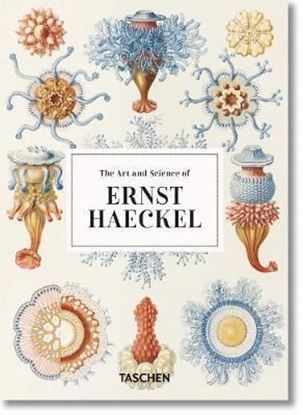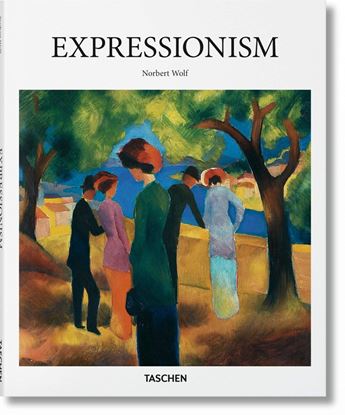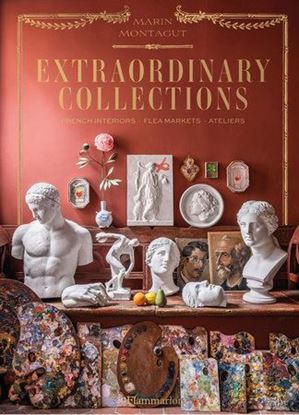

ERNST HAECKEL (GB) (40)
Ernst Haeckel (1834-1919) fue un biólogo, naturalista, evolucionista, artista, filósofo y doctor alemán, que dedicó su vida a la investigación de la flora y la fauna tanto de las cimas de las montañas más altas como de los océanos más profundos. Como ferviente partidario y estudioso de las teorías de la evolución de Darwin, denunció el dogma religioso, escribió tratados filosóficos, obtuvo un doctorado en zoología y acuñó términos científicos, ahora de uso común, como ecología, filo y célula madre.
El inmenso legado de Haeckel ha fascinado, desconcertado y polarizado a varias generaciones. Pero ¿cuál era la esencia de la extraordinaria labor de su vida? Al igual que su predecesor intelectual, Alexander von Humboldt, Haeckel no sólo buscaba descubrimientos nuevos sino también explicaciones.
2,200
1,760
ESO NO ESTABA. HISTORIA DEL BLUES
¿Qué llevó a Bessie Smith a ser coronada como la Emperatriz del Blues? ¿Por qué Robert Johnson se convirtió en leyenda sin apenas dejar rastro? ¿Cómo influyeron las blueswomen en el nacimiento del rock, mucho antes de que se les reconociera? Aquí se ofrecen muchas respuestas, junto a un relato vibrante que ofrece una mirada distinta, sin prejuicios y con la intensidad de un auténtico devoto de esta música. Recorreremos, en ese fascinante viaje de ida y vuelta, los caminos que llevan desde el Delta del Misisipi a los Olympic Studios de Londres, o del Checkerboard Lounge de Chicago al Royal Albert Hall. Repletas de historias, rarezas y leyendas, estas líneas acompañan al lector en la ruta del alma negra del siglo XX. Mariano Muniesa, periodista musical de referencia, sostiene con pasión que este género es la madre de todas las músicas. Desde los Rolling Stones hasta ZZ Top, pasando por Cream, Led Zeppelin o Johnny Winter, es la savia que alimenta el árbol del rock. Todo ello sin olvidar hacer justicia a las mujeres del blues, cuyas voces han sido tan poderosas como silenciadas. Un recorrido ardiente desde los orígenes más remotos hasta su influencia en el presente, con contexto histórico, social y político. Pasen y lean
o mejor aún, pasen y sientan. Porque esto no solo se escucha: se bebe, se suda, se sangra, se siente, se respira. Abran estas páginas y compruébenlo. «Del algodón a Chicago vinieron las aguas de barro para convertirse en piedras rodantes en Inglaterra. En España, esa ola llegó en forma de rock and roll. Nadie la pudo parar. Eso es para mí el blues: una forma de arte que derribó la segregación racial en todo el mundo e inspiró a miles de jóvenes a pactar con el diablo en cruces de caminos y a alcanzar la libertad. Robert Johnson te espera, pero antes debes conocer toda la magia. Coge el mojo de la mano del gran Mariano Muniesa». Jorge Salán, guitarrista de Mägo de Oz y de The Majestic Jaywalkers
1,995
1,596
ESPAÑA ABANDONADA
Barren red deserts dotted with post-colonial ghost towns, dilapidated inner city factories, discarded country homesteads and a succession of dormant, soot-filled power stations are just a handful of the desolate, yet visually rich narratives that form part of the abandoned Australia landscape.
Digging beneath the sun-baked soil, Shane Thoms uncovers the modern ruins scattered over this arid continent and reveals a series of beautifully broken abodes hiding in the crevices of the Great Southern Land.
Whispering of both long-gone happy family moments and human darkness, of working lives and the everyday pursuits of living, these atmospheric scenes allow us to reconstruct the stories of the past. Prompting conversations about a growing, diverse country with a complicated history, these abandoned places both connect as well as contrast the past and the present and chronicle the hidden remnants of the evolving Australian story.
1,995
1,596
EUGENE ATGET, PARIS (BU) (INT)
A flâneur and photographer at once, Eugène Atget (1857–1927) was obsessed with walking the streets. After trying his hand at painting and acting, the native of Libourne turned to photography and moved to Paris. He supplied studies for painters, architects, and stage designers, but became enraptured by what he called “documents” of the city and its environs. His scenes rarely included people, but rather the architecture, landscape, and artifacts that made up the societal and cultural stage.
1,650
1,320
EXPRESSIONISM (BASIC ART EDITION) GB
Sharp angles, strange forms, lurid colors, and distorted perspectives are classic hallmarks of Expressionism, the twentieth century movement that prioritized emotion over objective reality. Though particularly present in Germany and Austria, the movement’s approach flourished internationally and is today hailed as one of the most influential shifts in art history.
With leading groups Die Brücke (The Bridge) and Der Blaue Reiter (The Blue Rider), and key players such as Wassily Kandinsky, Egon Schiele, and Emil Nolde, the Expressionists disowned Impressionism, which they regarded as “man lowered to the position of a gramophone record of the outer world”, to depict instead a raw and visceral experience of life as it was felt, rather than seen on the surface. Their paintings brim with emotive force, conveyed in particular through intense and non-naturalistic color palettes, loose brushwork, and thick textures.
1,350
1,080
EXTRAORDINARY COLLECTIONS
French artist, designer, and talented antique hunter Marin Montagut celebrates the joy of collecting everything from textiles to barware to architectural details, taking readers inside a dozen private homes, flea markets, and unusual ateliers to discover the most whimsical treasure troves in France. From a film prop house’s array of leather sporting goods and playing cards to a travel buff’s vintage maps and globes, and from a sculpture studio’s Grecian plaster casts to an amateur designer’s spiral staircase models, and from Montagut’s own wonder wall assemblages to a cook’s haven filled with porcelain dessert molds and copper pots—objects, when presented together as a series, create unforgettable interiors that radiate charm. Inspiration comes in repetition: wooden zigzag rulers with engraved numbers aligned on a wall in a herringbone pattern create an artful space. The spare wooden forms of capipotes—devotional statues used in religious processions, their eyes turned heavenward in ecstasy—and silver ex-votos can be the point of departure for the theme of an entire room. Montagut’s mood boards for each chapter provide endless ideas for the home.
2,300
1,840














